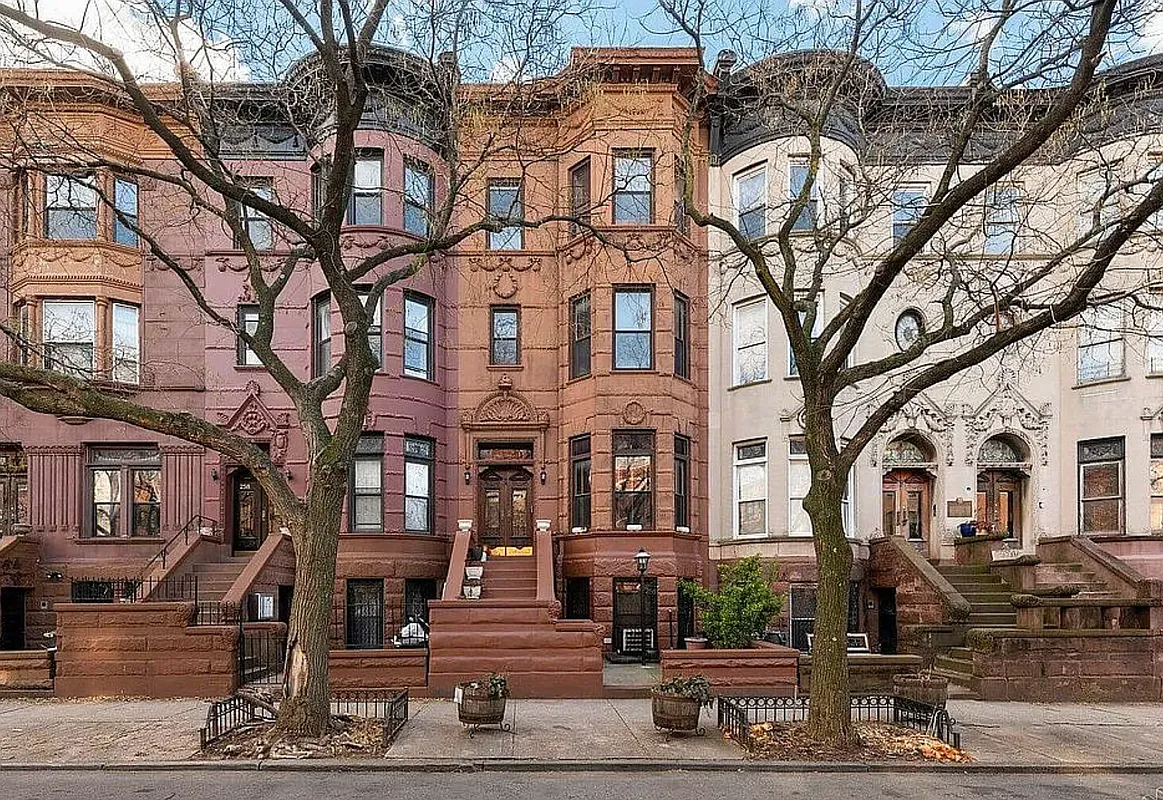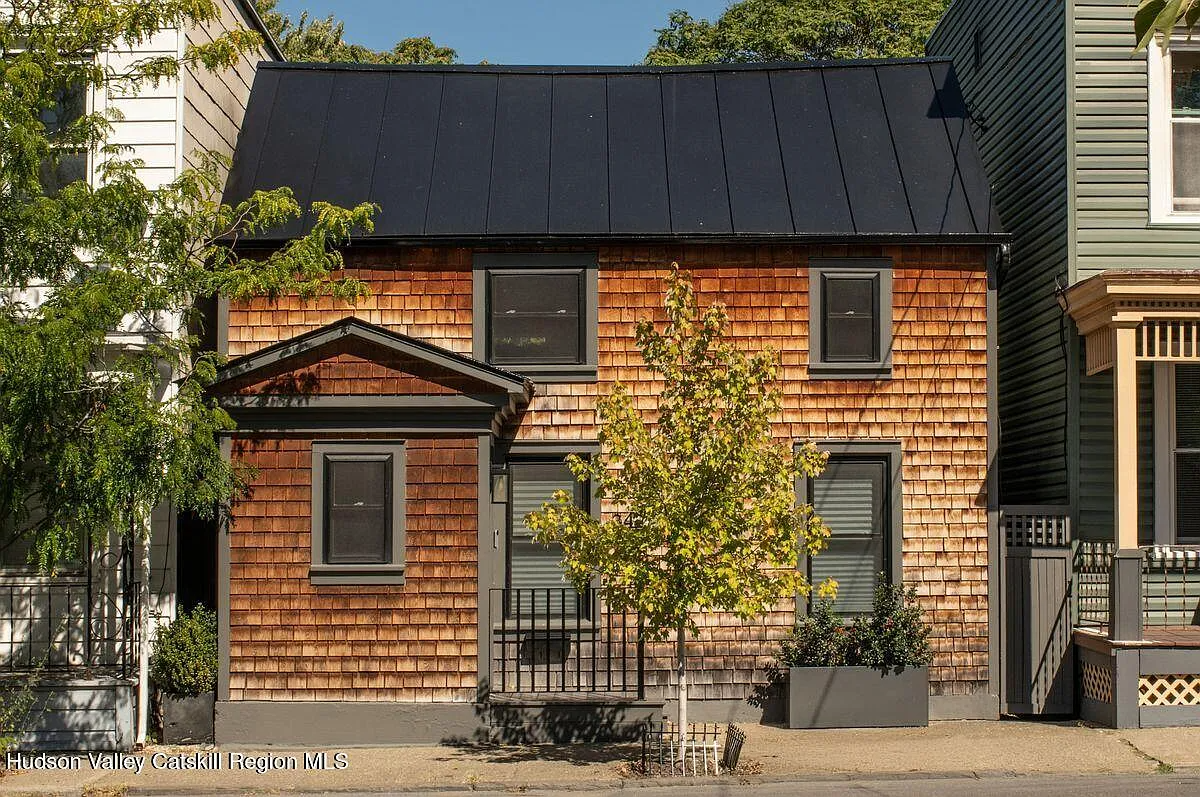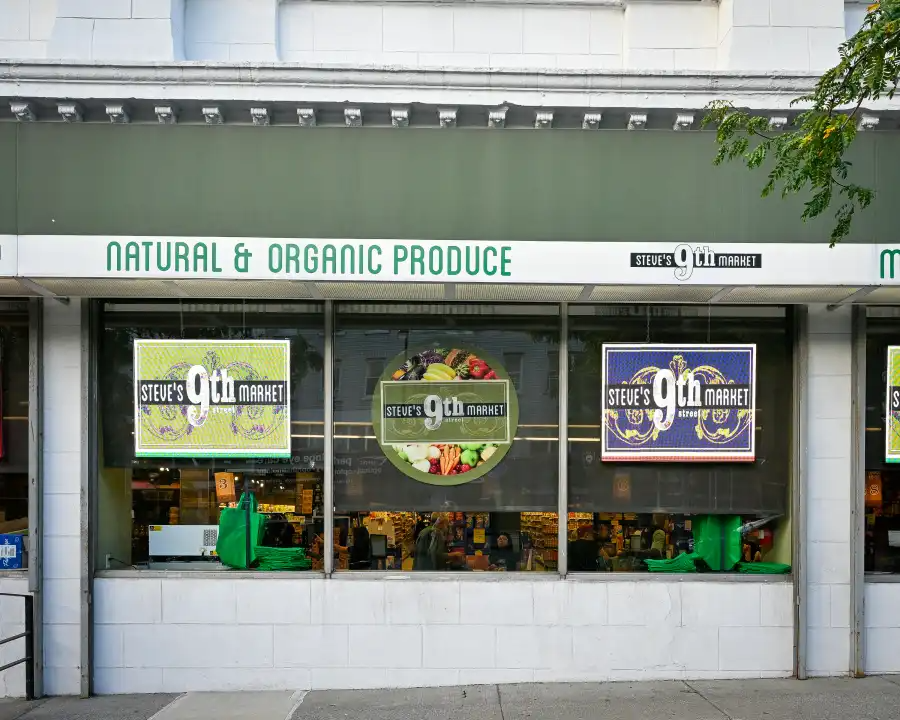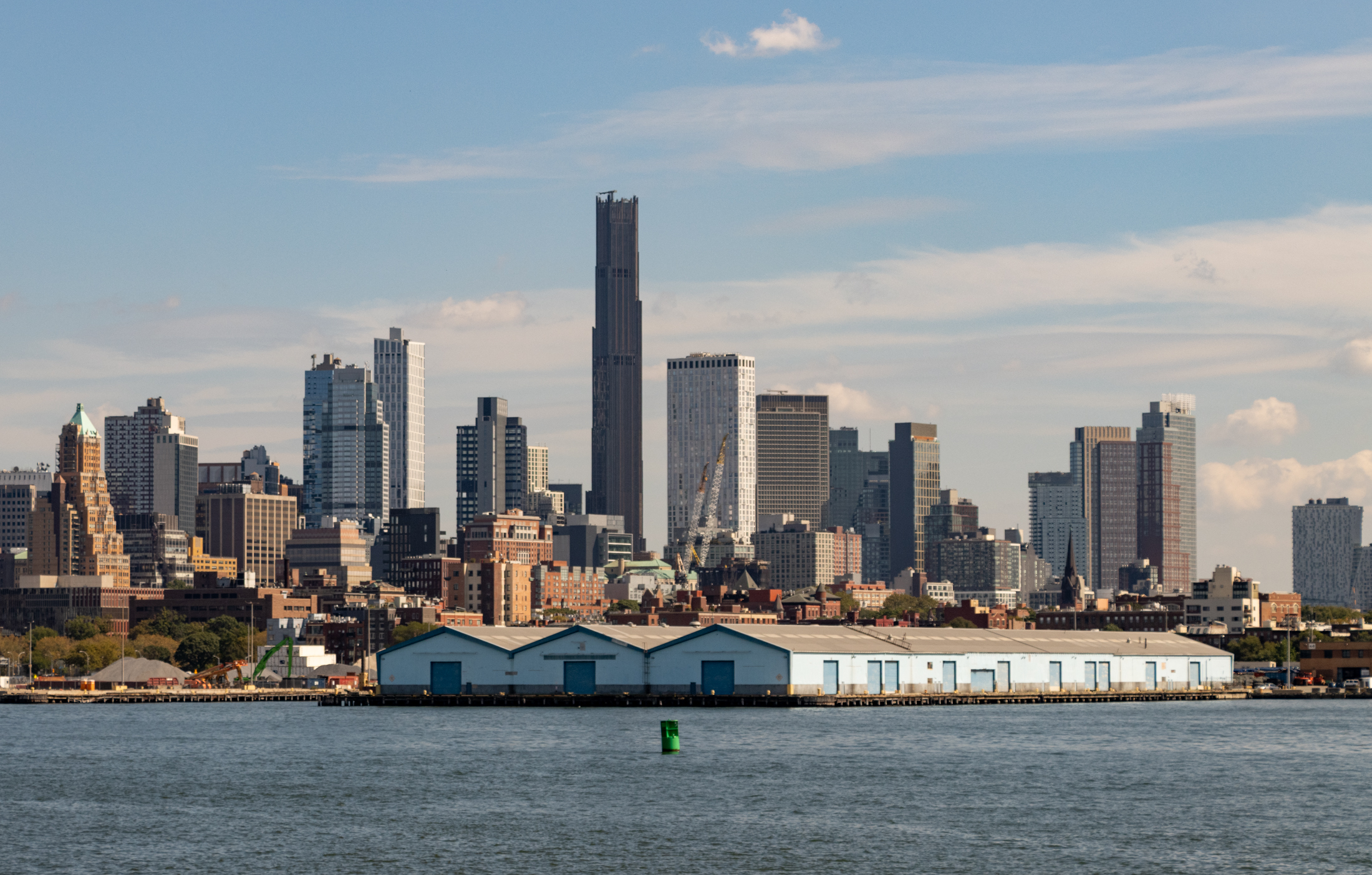Flip-Side of Prohibitively Expensive Windows
We know first-hand how expensive it is to replace the extra-long parlor floor windows having done it last year ourselves. (For those fortunate enough not to have had to do it, it’s a couple thousand bucks or more per window.) So it’s not surprising that many houses took short-cuts over the years, using standard length…
We know first-hand how expensive it is to replace the extra-long parlor floor windows having done it last year ourselves. (For those fortunate enough not to have had to do it, it’s a couple thousand bucks or more per window.) So it’s not surprising that many houses took short-cuts over the years, using standard length windows and just filling in the difference. The patch job at 211 Carlton Avenue is particularly crude though. GMAP





Babs, that building with the floating door on Clermont is 413, I live a couple of buildings down and see it every day. 🙂
Wow the asking price is a steal, according to the seller. Also, it is negotiable. Also, if the house were renovated, it would be worth an additional 20 percent. This is according to the seller.
Do any of these comments make sense when taken together? Or do they contradict each other?
Really interesting post. Let’s have more like this.
Anon 1:39, slapping stucco over wood frame exteriors is asking for trouble down the road.
First of all, it’s usually ugly, and there oughta be a law against it. (only half kidding) It’s usually done by reason of sheer cheapness and corner cutting by people who have no sense of historic perspective. OK, good wood siding or hardiplank is expensive. Granted. Vinyl siding (shudder) is cheaper, but a cheap stucco job probably costs the least.
The problem is that when they slap the stucco on, they are sealing in moisture already in between the siding and the framing. It would seem to me that the application of the metal mesh which acts as a key to hold the stucco on, leaves enough room for the moisture of the stucco itself to be sucked right into the building, which in a couple of years causes mold, creeping damp, and leaks on your interior walls. All of that will end up costing more money, including doctor bills, if you are allergic to mold, than having the house re-sided, or re-painted.
quick note on brownstone stone..there is such a thing, and from what I know all the brownstone in bklyn was quarried during the digging of the lakes in prospect park and greenwood cemetary many moons ago
Paul, you dont sound too bent out of shape at all- and given some of the comments I appauld you. Glad to see your heart is in the right place.
OT
My brother just found out from the Hist Dist that he has to replace 34 windows, all Marvin, ouch.
Boy there are a lot of interesting comments here.
I am the owner of that brownstone. It is very nicely located in Fort Greene. I just spent upwards of $55,000.00 redoing the front brownstone facade. Essentially all of the facades details were lost prior to my wife and I purchasing the building about five years ago. It took real craftmen over nine months to complete the brownstone.
I have already purchased the windows for the entire front excluding the garden level (a total of 8 wood windows). The Parlor floor windows are being restored to their original floor to ceiling length. The windows were shorten in the 80tys by a previous owner and I figure a few more weeks or even months will not hurt much.
I have been researching the purchase of the windows for some time and they are expensive (full stop). To have high quality windows installed professionally its at least $2,000 per parlor floor window. You can do alumnium which violates landmark, or have less than professional installation and risk the windows not functioning well (leaky) for less money but you may be like my neighbor across the street who had to have all her front windows redone as a result of air leaks.
I wish the windows were in already seeing that I have already paid for them but the manufacturer must customized them to fit each opening which takes four to six weeks at a minimum.
The house is for sale by me until June 30th at such time Corcoran will be managing the sale.
I am asking $1,500,000 (which is a steal) –There is some flexibility. It will be delivered vacant and if you are comfortable working with contractors it may be purchased at a great value.
There is no more than $150,000 worth of work needed for typical usage. The building has great bones and the work that has been done has been high quality. New staircases, new rubber roof, new two tier deck, new front facade, and more.
If the building were done, I think it would sale for $1,800,000 to $1,900,000
I hope I do not come off too bent out of shape about the comments –
Email me if you are interested in looking at it. paul.f.burton@verizon.net
And also check out this book:
Bricks and Brownstone : The New York Row House 1783-1929 (Classical America Series in Art and Architecture)
“this house is for sale? where has it been advertised?”
fsbo – craigslist – fort greene
do the right search and you’ll find it.
Some random links about actual brownstone:
http://www.brownstone.us/finishes.htm
http://www.brownstone.us/gallery/quarry01.htm
http://www.therockyardofmuskogee.com/naturalstone.htm
http://www.historichomeworks.com/hhw/pbriefs/pb07.htm#What%20is%20TerraCotta
Brownstone Terra Cotta:
Brownstone terracotta is the variety of this masonry material used earliest in American buildings (mid to late 19th century). The brownstone type is a dark red or brown block either glazed (usually a slip glaze) or unglazed. It was hollow cast and was generally used in conjunction with other masonry in imitation of sandstone, brick or real brownstone. It is often found in the architecture of Richard Upjohn, James Renwick, H. H. Richardson and is associated with the Gothic and Romanesque Revival movements through such ornamental detailing as moldings, finials and capitals.